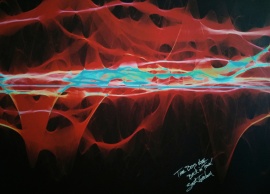I seldom read only one book at a time, except when it is one of those books that I cannot put down (such as the Harry Potter or the Song of ice and Fire series). So while I am reading The Art of Changing the Brain in its paper form, I have also The End of Big on my tablet. In a way, the two books are on their appropriate platforms: the former reads best while taking notes on the side (I have not yet found a digital way to take notes that is as effective for me as the actual act of writing), and the latter has so many interesting links that having it on the tablet lets me immediately check them out.
I will eventually write my impressions on The End of Big, as it is a powerful book, covering many areas and very thought-provoking. But today I will write about a mental collision I had last night, just after I finished reading Chapter 3 of the Brain book. If you read my previous posting, this chapter is about the right balance for stimulation of both the front and the back of the barin (providing the knowledge and also acting on it). The end of that chapter, which I did not finish in the posting, is about the factors that affect this balance in a negative way, be it the amount of information perceived to be necessary (and crammed into courses), or the push toward being an innovative teaching (so most time is spent in the active testing part). I completely agree with that, as the whole idea of reading this book and in general books about learning theories was because I feel that often we educators just implement things because they are popular, not because we know How and why to use them…
So I felt validated and cozy, and before going to sleep read a bit of the End of Big book. And stumbled on the following: “My hobby for the past decade has been memorizing comments.” The chapter is dedicated how our memory has changed (for the worse) because of the existence of Google. Citing Nick Carr’s provocative question: Is Google making us stupid?,” the autor goes on saying how much he cherishes his memorized poems, and without going too deep, how he worries about the effect of radical connectivity on our knowledge.
So I had to sit back and think for a bit. I had to memorize many poems when in high school (in Europe eons ago), and I can still recite most of them. When teaching anatomy and physiology, I require my students to memorize the normal values of blood pH, pCO2, and bicarbonate values. But for the past 2 decades, I do not think I had ever memorized or required to memorize anything, as it seemed a waste of brain power.
So I decided to do an experiment: I am very fond of Lincoln’s Gettysburg address, so I decided to memorize it. English not being my first language, it will probably take longer. I have so far managed to sentences- but they are complex sentences. “..a new nation conceived in liberty and dedicated to the proposition that all men are created equal.” I had to think of each work deeply, why exactly was this word used and not another synonym?
And as I went through each word and the exercise of putting those words in order, I had this little light bulb in my head turning on. There may be some value to memorizing after all. Especially if memorization involves a powerful intellectual processing exercise.
So very cool- to appreciate memorization via en internet guru.




